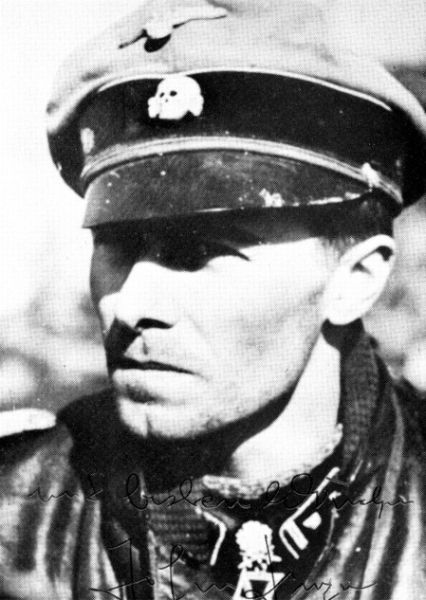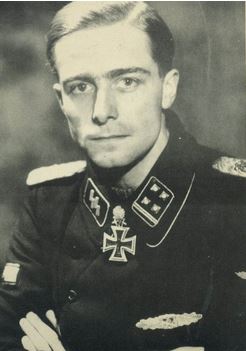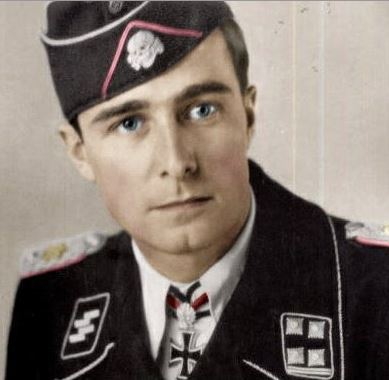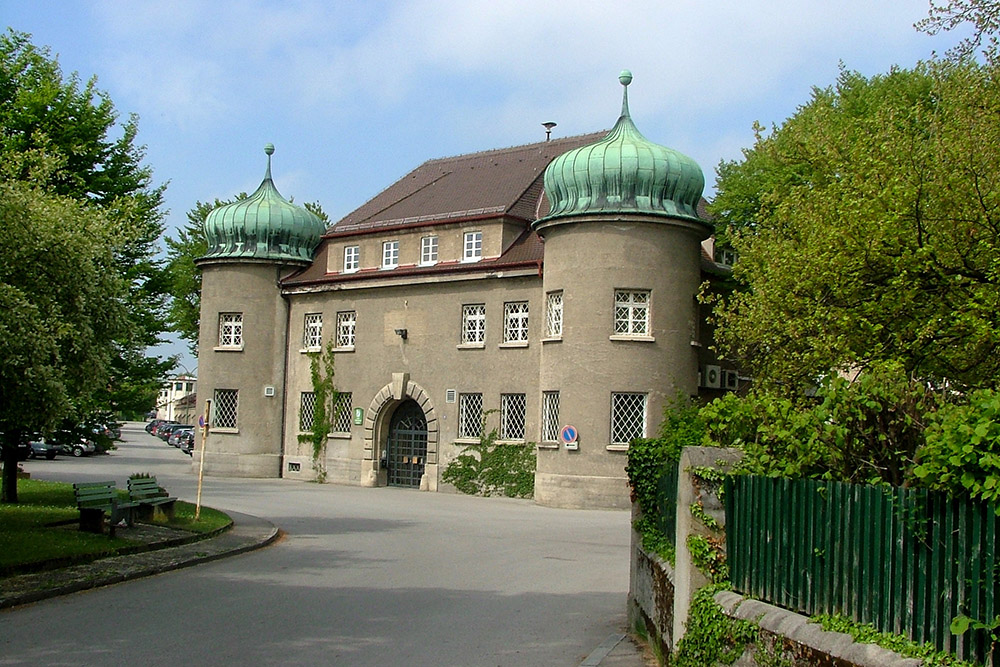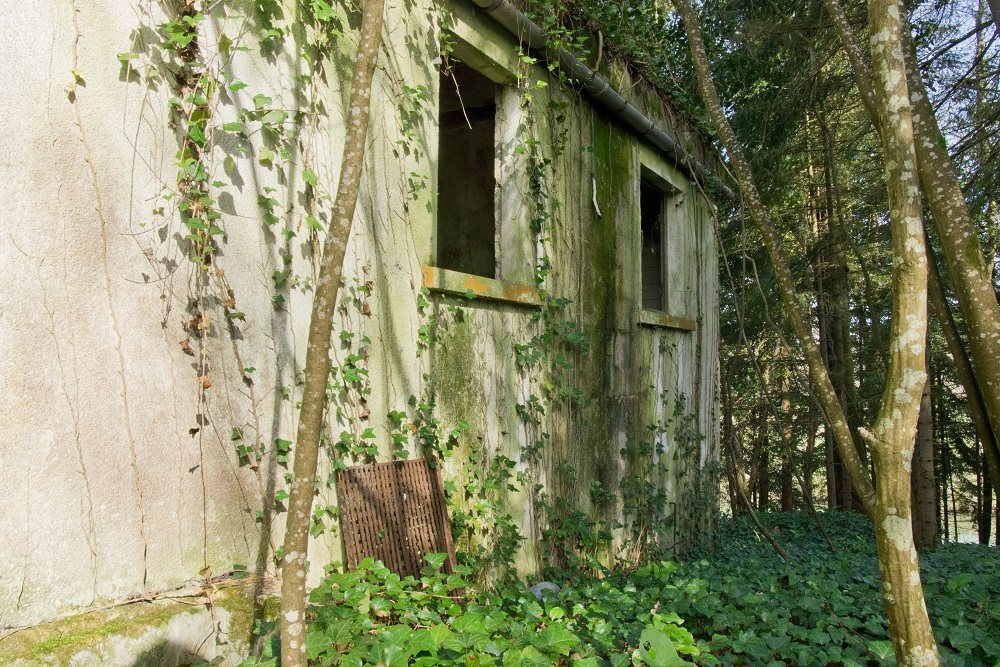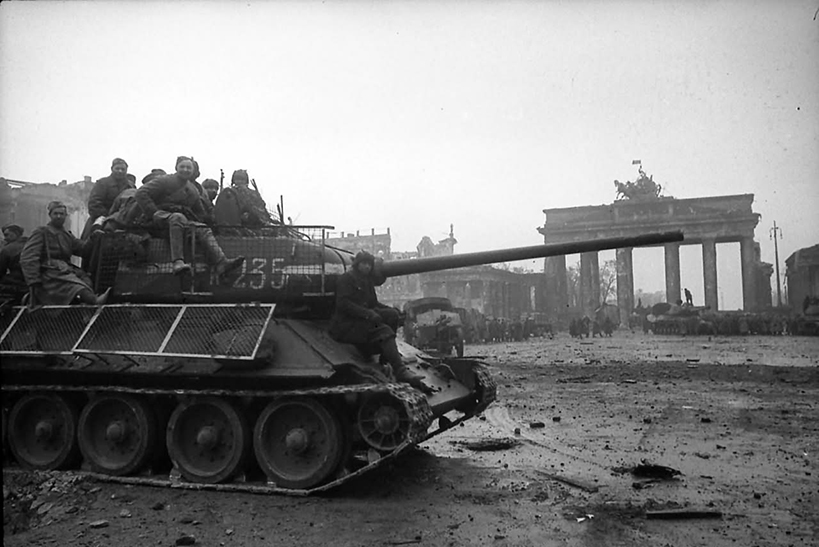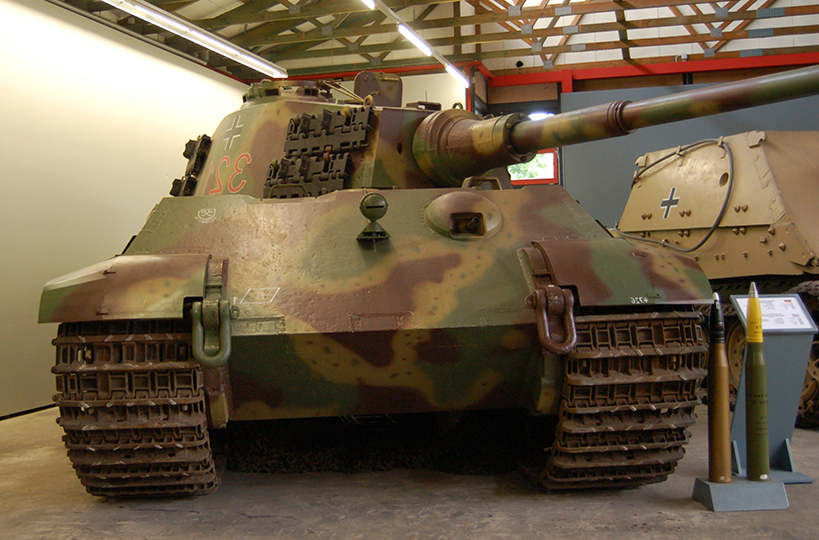Peiper, Joachim 'Jochen' (Waffen SS)
- Date of birth:
- January 30th, 1915 (Berlin-Wilmersdorf, Germany)
- Date of death:
- July 14th, 1976 (Traves, France)
- Service number:
- SS-Nr.: 132.496 // NSDAP-Nr.: 5.508.134
- Nationality:
- German
Biography
Promotions:
14.10.1933: SS-Anwärter
23.01.1934: SS-Mann
07.09.1934: SS-Sturmmann
15.10.1934: SS-Rottenführer
01.03.1935: SS-Unterscharführer
11.09.1935: SS-Standartenjunker
09.11.1935: SS-Scharführer
25.02.1936: SS-Hauptscharführer
05.03.1936: SS-Standartenoberjunker
20.04.1936: SS-Untersturmführer
30.01.1939: SS-Obersturmführer
06.06.1940: SS-Hauptsturmführer
30.01.1943: SS-Sturmbannführer
11.11.1943: SS-Obersturmbannführer
20.04.1945: SS-Standartenführer
Career:
00.04.1923: Hitlerjugend
12.10.1933: 1. Reiter-Sturm, SS-Reiter-Standarte 7
16.10.1933: joined the SS
00.01.1935: Führer-Lehrgang, Jüterbog
24.04.1935: SS-Junker, SS-Junkerschule Braunschweig
00.02.1936-00.03.1936: Zugführer-Lehrgang, Dachau
00.05.1936-00.06.1938: SS-Ustuf, Zugführer, LAH
01.03.1938: joined the NSDAP
04.07.1938: SS-Ustuf, Stab, Reichsführer SS
01.11.1939: SS-Ostuf, 1. Adjutant, Reichsführer SS
17.05.1940: SS-Ostuf, Zugführer, 11. Kompanie, SS-Standarte 'LAH', SS-VT - campaign in the West
21.06.1940: SS-Hstuf, 1. Adjutant, Reichsführer SS
00.09.1941: SS-Hstuf, Chef, 11. Kompanie, LAH - campaign in Russia, Mariupol and Rostov-on-Don then Taganrog on the Azov Sea
00.05.1942: LAH sent to refit in France
00.08.1942: SS-Hstuf, Führer, III. Bataillon, SS-Panzergrenadier-Regiment 2, 1. SS-Panzergrendadier-Division 'LSSAH'
31.01.1943: SS-Stubaf, Führer, III. Bataillon, SS-Panzergrenadier-Regiment 2, 1. SS-Panzergrendadier-Division 'LSSAH' - Lyubotin, near Kharkov
00.02.1943: recapture of Kharkov
00.06.1943: Operation Zitadelle in Kursk
17.07.1943: III. Bataillon, LSSAH transferred to the area of Cuneo in Northern Italy
10.09.1943: disarmed Italian garrisons in Alessandria and Asti
19.09.1943: massacre in the village of Boves
00.11.1943: Zhytomyr
20.11.1943: SS-Ostubaf, Kdr, SS-Panzer-Regiment 1, 1. SS-Panzergrenadier-Division 'LSSAH'
05.12.1943: burned the village of Pekartschina
20.01.1944: transferred to the Führerhauptquartier and sent on leave to refit
00.04.1944: joined the SS-Panzer-Regiment 1, LSSAH in Limburg, Belgium
14.06.1944: sent to Caen, Normandy
28.06.1944: fightings in Avranches, suffering from a nervous breakdown or jaundice evacuated in Sées
00.09.1944-07.10.1944: Lazarett in Tegernsee in Upper Bavaria
00.11.1944: SS-Ostubaf, Führer, Kampfgruppe, 1. SS-Panzergrenadier-Division 'LSSAH' - Operation Wacht am Rhein, Ardennes
17.12.1944: Lanzerath, Loseheimergroben, Honsfeld, Büllingen, Hünningen, Ligneuville, Baugnez, Amblève, Stavelot - Malmedy massacre
18.12.1944: Amblève, Trois-Ponts, Stoumont, La Gleize
24.12.1944: short on ammunition and fuel, destroyed his vehicles and retreated on foot with the remnants of his Kampfgruppe
31.01.1945: in Berlin
04.02.1945-14.02.1945: Panzergrenadierschule Krhanice
15.02.1945: SS-Ostubaf, Kdr, SS-Panzer-Regiment 1, 1. SS-Panzergrenadier-Division 'LSSAH' in Farnad - Operation Frühlingserwachen
01.05.1945: SS-Staf, retreated towards Austria
08.05.1945: SS-Staf, surrendered to the US troops on the Enns River - US POW
28.05.1945: escaped to Rottach but captured near Schliersee and interned in the Dachau Camp
21.08.1945: identified and sent to the interrogation camp of the 3rd US Army in Freising
16.07.1946: sentenced to death by hanging then commuted to life imprisonment
28.12.1956: released
Do you have more information about this person? Inform us!
- Period:
- Second World War (1939-1945)
- Rank:
- SS-Obersturmführer (Lieutenant)
- Unit:
- Zugführer, 11. Kompanie, SS-Standarte 'LAH', SS-VT
- Awarded on:
- May 31st, 1940
- Period:
- Second World War (1939-1945)
- Rank:
- SS-Hauptsturmführer (Captain)
- Unit:
- Chef, Kompanie, LAH
- Awarded on:
- July 1st, 1940
- Period:
- Second World War (1939-1945)
- Awarded on:
- 1941
- Period:
- Second World War (1939-1945)
- Rank:
- SS-Hauptsturmführer (Captain)
- Awarded on:
- 1940
- Period:
- Second World War (1939-1945)
- Rank:
- SS-Hauptsturmführer (Captain)
- Awarded on:
- August 1942
- Period:
- Second World War (1939-1945)
- Rank:
- SS-Sturmbannführer (Major)
- Unit:
- Kommandeur, III.(gepanzerte) Bataillon, SS-Panzergrenadier-Regiment 2, 1. SS-Panzergrenadier-Division “Leibstandarte SS Adolf Hitler”, Heeresgruppe Süd
- Awarded on:
- March 9th, 1943
“On the 06.03.1943 SS-Sturmbannführer Peiper (commander of the III.(gep)/Pz.Gren.Rgt. 2 ‘LSSAH’) had the mission of breaking the enemy resistance along the line southern edge of Porssjandje—Ljaschowa Farm—Gawrilowka. After this he was to advance beyond this line and advance to the Peressel farm (the day’s objective).
He set out at 11:45, and by 13:45 he had reached the southern edge of Peressel. Here the enemy’s unfinished blocking position was overrun by 14:00, and afterwards he [Peiper] advanced far beyond the day’s objective on his own initiative. He pushed on through the enemy columns, and by 15:30 he had driven the enemy out of their preprepared field positions at Fedorowka—Bridok Farm. A bridgehead was established here, and he held this position despite having been cut off from all friendly contact to the rear and coming under heavy enemy attack from all sides. 3 T-34s were knocked out.
By doing all this SS-Sturmbannführer Peiper paved the way for the successful friendly attack that was launched against Walki on the 07.03.1943.”
- Period:
- Second World War (1939-1945)
- Rank:
- SS-Sturmbannführer (Major)
- Unit:
- Kommandeur, III.(gepanzerte) Bataillon, SS-Panzergrenadier-Regiment 2, 1. SS-Panzergrenadier-Division “Leibstandarte SS Adolf Hitler”, Heeresgruppe Süd
- Awarded on:
- March 19th, 1943
- Period:
- Second World War (1939-1945)
- Rank:
- SS-Sturmbannführer (Major)
- Unit:
- Kdr, I. Abteilung, SS-Panzer-Regiment 1, 1. SS-Panzergrenadier-Division "Leibstandarte SS Adolf Hitler"
- Awarded on:
- May 6th, 1943
"Peiper was ordered to take Zmiev and make contact with the 320. Infanterie (sic) Division. Peiper carried out this mission and brought back 750 wounded from the
320. Infanterie (sic) Division. While doing so he completely destroyed an enemy snowshoe battalion, which blocked his way back."
- Period:
- Second World War (1939-1945)
- Rank:
- SS-Sturmbannführer (Major)
- Unit:
- Kdr, III. Batailon, SS-Panzergrenadier-Regiment 2, 1. SS-Panzergrenadier-Division "Leibstandarte SS Adolf Hitler"
- Awarded on:
- July 24th, 1943
- Period:
- Second World War (1939-1945)
- Rank:
- SS-Sturmbannführer (Major)
- Awarded on:
- 1943
- Period:
- Second World War (1939-1945)
- Rank:
- SS-Sturmbannführer (Major)
- Awarded on:
- October 20th, 1943
- Period:
- Second World War (1939-1945)
- Rank:
- SS-Obersturmbannführer (Lieutenant-colonel)
- Unit:
- Kommandeur, SS-Panzer-Grenadier-Regiment 1, 1. SS-Panzer-Division “Leibstandarte SS Adolf Hitler”
- Awarded on:
- January 27th, 1944
“On the 04.12.1943 the Division received the task of advancing out of the area NW of Tschernjachoff and across the line Mokrentschina—Pekartschina in order to thrust into the flank of those enemy troops opposite the frontline of the XIII. Armee-Korps. These hostile forces were to be crushed with an energetic blow in order to enable the both the Division as well as the other Divisionen of the XXXXVIII. Panzer-Korps to secure the advance of the XIII. Armee-Korps to the Teterew river. It was intended that contact would be established with the simultaneously advancing LIX. Armee-Korps.
Kampfgruppe Peiper (SS-Pz.Rgt. 1, reinforced SS-Pz.Aufkl.Abt. 1, III.(gep.)/SS-Pz.Gren.Rgt. 2, 2./SS-Pz.Pi.Btl. 1, 5./SS-Flak.Abt. 1) was ordered to commence its advance at 15:00 on the 05.12.1943. His task was to bypass the enemy-occupied village of Tschernjachoff from the west under the cover of night before advancing along a broad front via Andrejew and the high ground along both sides of Styrty. Then, without regard for any threat to the flanks, he would advance and secure additional territory in the direction of Radomyschl.
The Kampfgruppe first captured Sseljantschina with its foremost elements. Then, at 20:00 on the 05.12.1943, the reconnaissance units of the III.(gep.)/SS-Pz.Gren.Rgt. 2 reported that the enemy was firmly established in deeply echeloned field positions west of Pekartschina. The village itself was also prepared for all around defense. The village could not be bypassed because of the unfavourable terrain conditions. More than that, it was imperative that the bridges in the village fall into friendly hands undamaged. Thus SS-Sturmbannführer personally took over command of the armoured Bataillon (which he had only recently relinquished command of) and launched a ferocious night attack against this village. The totally surprised enemy forces (both in front of and within the village) were annihilated by the weapons and flamethrowers of the friendly SPWs.
During the subsequent friendly reconnaissance probes towards Andrejew (which SS-Sturmbannführer Peiper again personally led), he acquired important details needed for planning the attack of his armoured group on the following day.
With the help of the information obtained by this nocturnal reconnaissance, he set out at dawn and crushed an enemy Pakfront. By around 06:00 Andrejew had been captured, and the road Tschernjachoff—Korosten blocked. To the east of Andrejew the Kampfgruppe then overran several enemy batteries, and after eliminating several anti-tank gun strongpoints the high ground on both sides of Styrty was secured by around 10:00. With this the objective of the first day had been reached.
The Kampfgruppe then continued with its advance towards the east, eliminating enemy batteries and Pakfronts as it went. During this torrential advance it captured the command posts of the 121st Rifle Division (in Kisselowka), the 322nd Rifle Division (in Seliyzschy), the 148th Rifle Division (in Kamenny Brid) and the 336th Rifle Division (in Kaitanowka). The Kampfgruppe then had to halt at Kaitanowka in order to resupply.
On this day the Kampfgruppe destroyed or captured the following:
- 22 artillery pieces
- 76 anti-tank guns (7.62 cm)
- 38 anti-tank rifles
- 49 machine-guns
- 40 vehicles
- 71 horse drawn wagons
- 1450 dead.
This onslaught (which saw the armoured group advance 30 km deep into the enemy’s rear despite the extreme difficulties related to the terrain and navigation) wrought havoc along the entire length of the Russian front, and this enabled the Divisionen of the XIII. Armee-Korps to advance.
As the enemy had periodically interdicted the friendly supply road on the 06.12.1943, the armoured group was only able to resume its easterly advance during the afternoon of the 07.12.1943. It began by advancing towards Tschaikowka.
The enemy had transformed this place into a fortress, and reinforced its defenses with swiftly brought up anti-tank guns. Thus, in order to avoid friendly losses, SS-Sturmbannführer Peiper decided to wait until darkness before bypassing Tschaikowka to the north and continuing the advance eastwards.
At around 19:00 the armoured group was already in the rear of the enemy, and after eliminating a few anti-tank guns it thrust about 10 km towards the east. The Kampfgruppe was then ordered by the Division to pivot northwards, and as it kept advancing it captured Chodory and then entered into the heavily fortified village of Sabolot. Following brutal urban combat, SS-Sturmbannführer Peiper and his men were firmly in control of the village by around 10:00 on the following day.
During this night attack Kampfgruppe Peiper destroyed or captured the following:
- 1 tank (T-34)
- 8 artillery pieces
- 1 anti-tank gun (4.5 cm)
- 61 anti-tank guns (7.62 cm)
- 21 anti-tank rifles
- 55 machine-guns
- 5 vehicles
- 930 dead
- 3 prisoners.
This nocturnal rampage by SS-Sturmbannführer Peiper and his armoured group deep in the rear of the enemy created a breach in the enemy’s defensive system of strongpoints. The net result was that the foe was unable to establish an operational bridgehead across the Teterew.
During these days of battle SS-Sturmbannführer Peiper demonstrated extraordinary bravery as well as excellent tactical leadership of his strong formation. His personal boldness, determined execution of his battle plans and his lightning-swift recognition and utilization of favourable situations enabled his armoured group to bring about a great success for the Division.
More than this, the SS-Pz.Rgt. 1 was able to destroy/capture the following under the leadership of SS-Sturmbannführer Peiper in the time period 21.11.-24.12.1943:
- 100 tanks (T-34)
- 11 guns
- 124 anti-tank guns (7.62 cm)
- 24 anti-tank rifles
- 16 vehicles
- 14 tractors
- 7 AA guns
- 2 aircraft (Li-2s).
I believe that the proven personal bravery and outstanding regimental leadership of SS-Sturmbannführer Peiper mark him as one worthy of being awarded the Oakleaves to the Knight’s Cross of the Iron Cross. I ask that this high award be given unto him.”
377th Award.
- Period:
- Second World War (1939-1945)
- Rank:
- SS-Obersturmbannführer (Lieutenant-colonel)
- Unit:
- Kommandeur, SS-Panzergrenadier-Regiment 1, 1. SS-Panzer-Division "Leibstandarte SS Adolf Hitler”
- Awarded on:
- January 11th, 1945
“SS-Obersturmbannführer Peiper has previously distinguished himself outstandingly in the campaigns of the 1. SS-Panzer-Division ‘LSSAH’ since August 1941, and been decorated with the Oakleaves to the Knight’s Cross of the Iron Cross. More recently, during the first days of the great offensive in the west, Peiper once again showed decisive boldness, ruthlessness and level-headed leadership in every situation as commander of the armoured group of the Division.
After overcoming substantial road/terrain difficulties, and making contact with the 3. Fallschirm-Jäger-Division at Lanzerath, the armoured group launched a surprise attack against the heavily secured village of Honsfeld. It captured the village as well as the bulk of an American reconnaissance battalion. Quick to exploit this success, he immediately resumed advancing towards Büllingen. Despite strong resistance the thoroughly conducted attack succeeded, and in the process 12 enemy aircraft and abundant war materiel fell into the hands of the Kampfgruppe. Disregarding possible flank threats, with only the aim of a deep thrust in mind, the armoured group continued advancing through Möderscheid-Schoppen-Faymonville-Ligneuville. Near Baugnez an enemy supply column was annihilated, and after eliminating the blocking formations placed in front of it the Kampfgruppe forced the staff of the 49th Anti-Aircraft artillery brigade into flight.
Without regard for security or stopping the group carried on with its commander at the spearhead, pursuing the fleeing enemy and already reaching Stavelot by the evening. After reassembling the group attacked on the morning of the 18.12.1944 against tough enemy resistance made even stronger by the terrain, which heavily favoured the defense. The bridge here was captured, and the group immediately continued advancing further via Trois-Ponts towards La Gleize.
Already at 14:30 the village was captured, after breaking the very hard resistance. Chenneux and Stoumont were also captured despite the unexpectedly tough enemy fighting spirit.
Then fuel difficulties forced the group to halt.
Cut-off from the bulk of the Division, the armoured group held out against an enemy who was being reinforced daily, inflicting heavy losses against the foe. Starting on the 20.12.1944 the attacks of the 3rd American tank division and the 30th American infantry division, up to 14 in one day, were repulsed. On the 22.12.1944, when the elements in Stoumont and Chenneux were threatened with encirclement, SS-Obersturmbannführer Peiper decided to pull back all forces to la Gleize. Now being crushed by the materiel weight of these enemy divisions, a heroic battle commenced where every meter of ground was contested. Inspired by the unbroken will to fight of the commander, all attacks were fought off. After all Panzers were immobilized, and the last rounds had been fired, SS-Obersturmbannführer Peiper received the order to break out on the evening of the 23.12.1944.
Taking along the still usable war materiel, the 800-man strong Kampfgruppe disengaged from the enemy unnoticed at 02:00 on the 24.12.1944. Over the course of 22 hours it marched through trackless, mountainous wooded terrain in enemy territory. With great physical effort the enemy frontline at Roglin Vale was overcome. Despite all enemy units in this sector being on alert and enemy fighter-bomber/artillery-spotter aircraft being on the lookout for Kampfgruppe Peiper, the enemy resistance here was broken in a surprise thrust launched with the courage of desperation. The better part of the Kampfgruppe swam across the Salm river and reached friendly territory on the opposite bank. In the process SS-Obersturmbannführer Peiper was wounded while at the head of his Kampfgruppe.
Through this surprise thrust by the armoured group into the depths of enemy territory, conducted under the command of SS-Obersturmbannführer Peiper, several enemy divisions were forced to relocate from the Aachen-Jülich area. These were then tied down by the resistance of the armoured group in such a way that permitted friendly formations located further south to succeed in acquiring additional territory towards the west.
The following was destroyed or captured:
Armour: 21 tanks shot-up, 6 tanks destroyed in close combat.
Guns: 50 heavy anti-tank guns and 12 Pak-Flak destroyed.
Aircraft: 2 fighter-bombers shot down, 12 aircraft captured and destroyed.
In Honsfeld an encircled American reconnaissance battalion with their equipment was captured. The latter included about 15 armoured cars and 35 armoured halftracks.
Captured or destroyed wheeled vehicles: 180 vehicles of all kinds.
Enemy losses: About 300 enemy dead, 450 prisoners (including 4 staff officers).
I ask that this well-deserved and exceedingly brave SS officer be awarded the Oakleaves with Swords to the Knight’s Cross of the Iron Cross.”
119th Award.
- Period:
- Second World War (1939-1945)
- Awarded on:
- 1945
Sources
- Photo 1: Willi Schumacher Collection
- Photo 2:
- Photo 3:
- - FELLGIEBEL, W.P., Elite of theThird Reich, Helion & Company Limited, Solihull, 2003.
- MOONEY, PETER, Waffen-SS Knights and their Battles, Schiffer Military History, 2016.
- MOONEY, PETER, Waffen-SS Knights and their Battles, Schiffer Publishing, Ltd, 2010.
- PATZWALL, K. & SCHERZER, V., Das Deutsche Kreuz 1941-1945, Band II, Verlag Klaus D. Patzwall, Norderstedt, 2001.
- SCHNEIDER, J.W., Their Honor Was Loyalty!, Bender (R.James) Publishing, 1993.
- Oakleaves Vorschlag Sketch.
- Die Ordensträger der Deutschen Wehrmacht (CD), VMD-Verlag GmbH, Osnabrück, 2002
- Bouwmeester H., Beginning of the End: The Leadership of SS-Obersturmbannführer Joachim Peiper, Fort Leavenworth, Kansas, 2004
- Tank Killers, History of the Tank Destruction Badge by Thomas W. Breyette & Roger James Bender
- Microfilm Publication A3343. US National Archives.





















